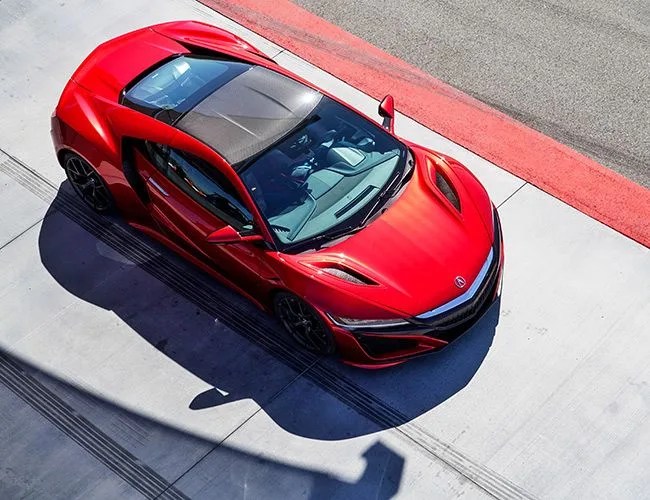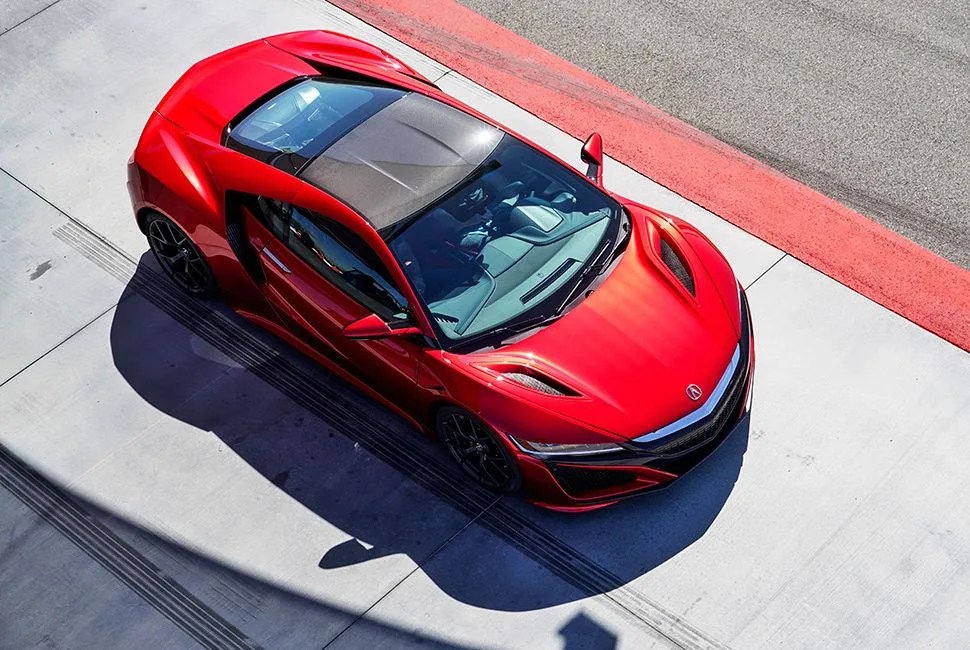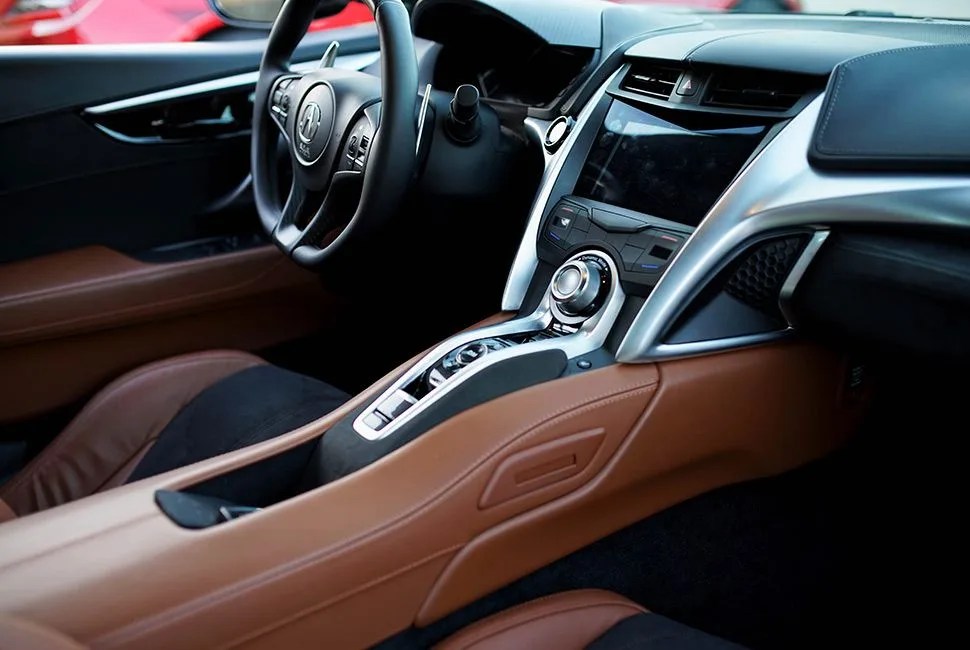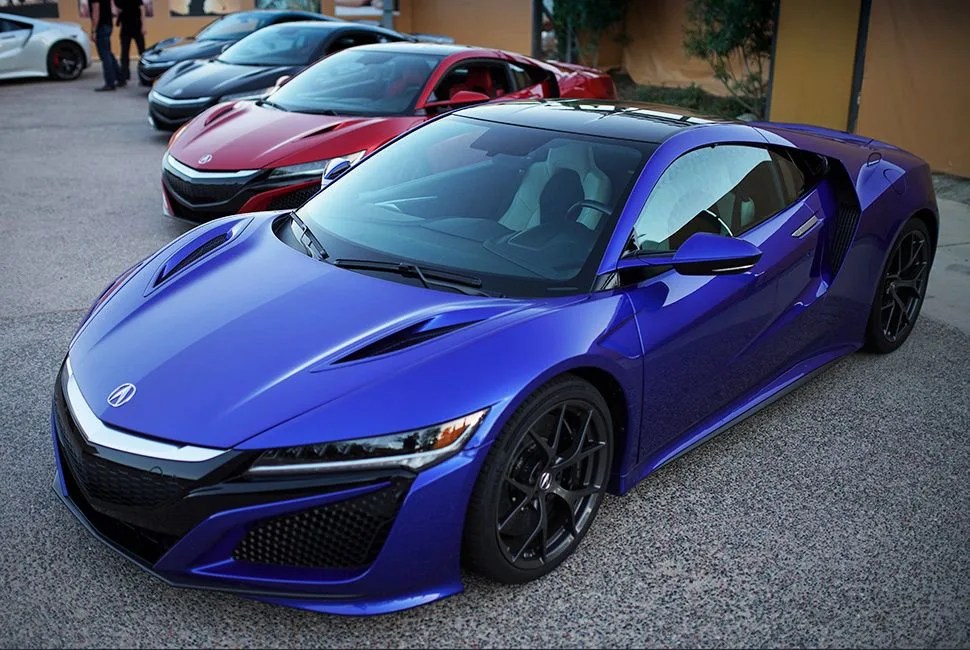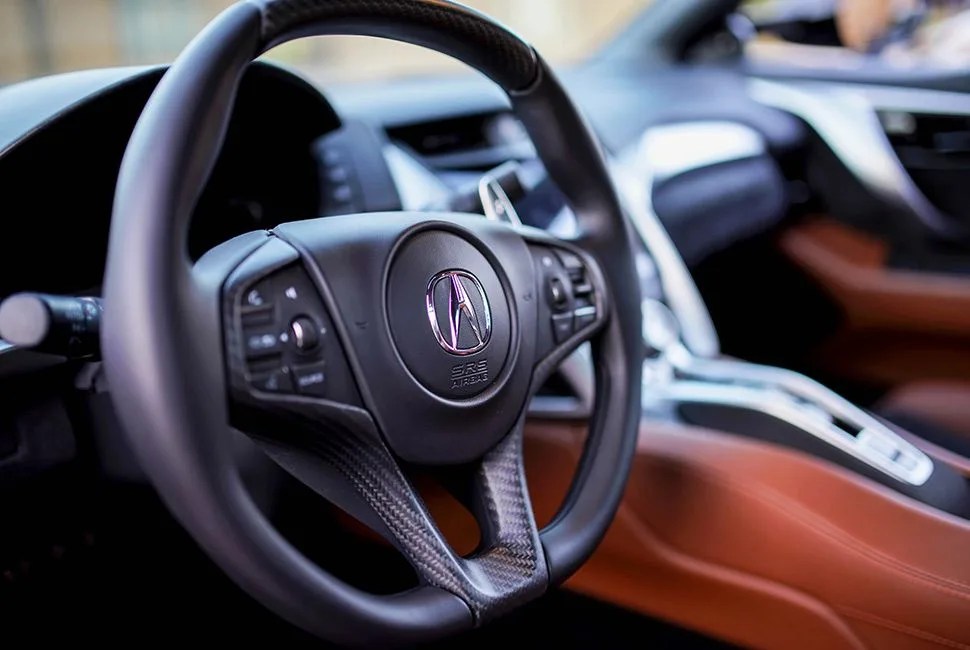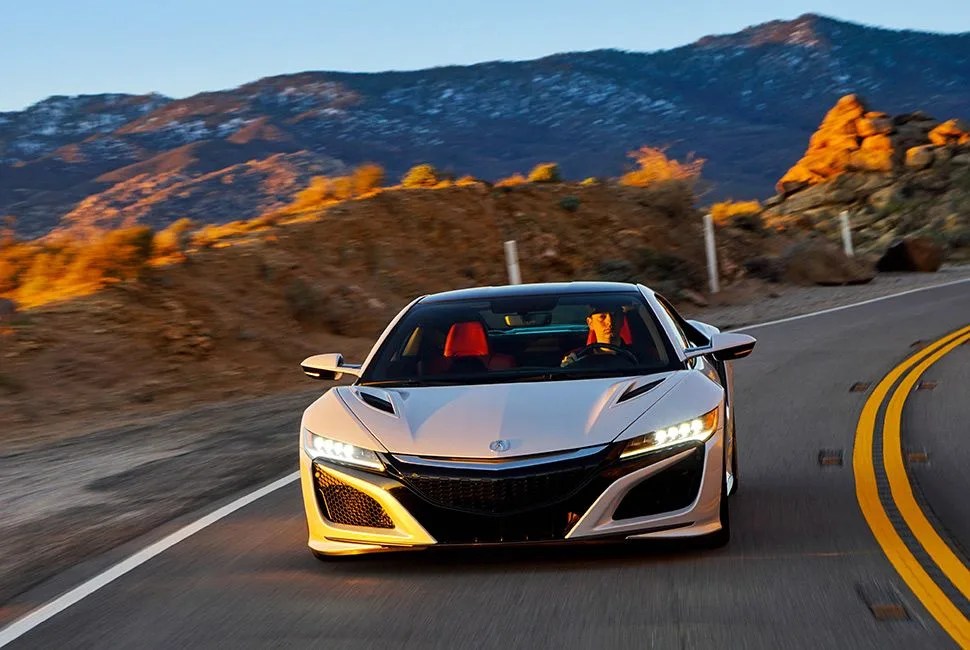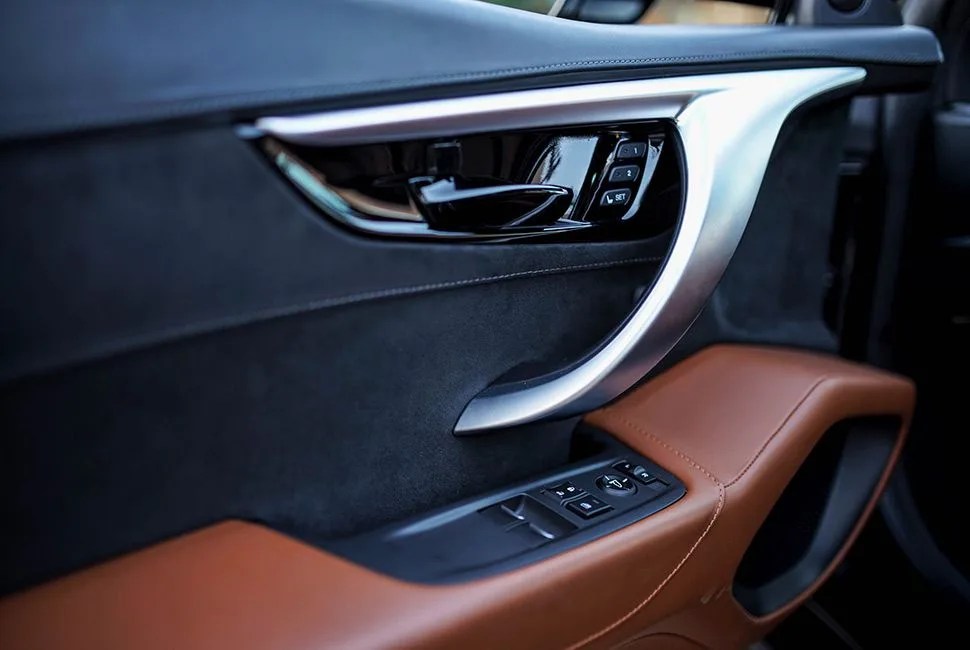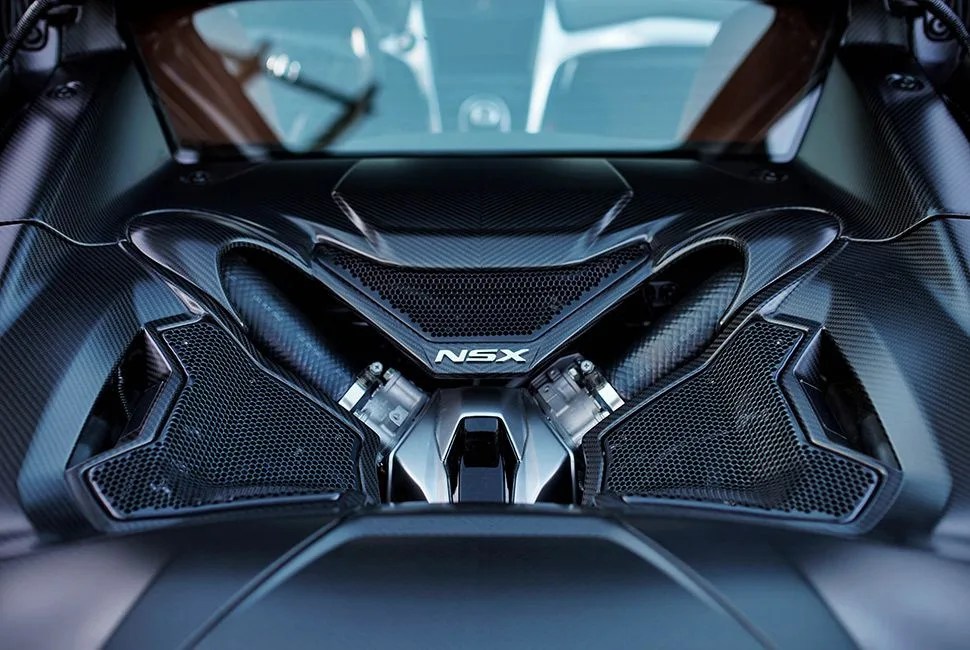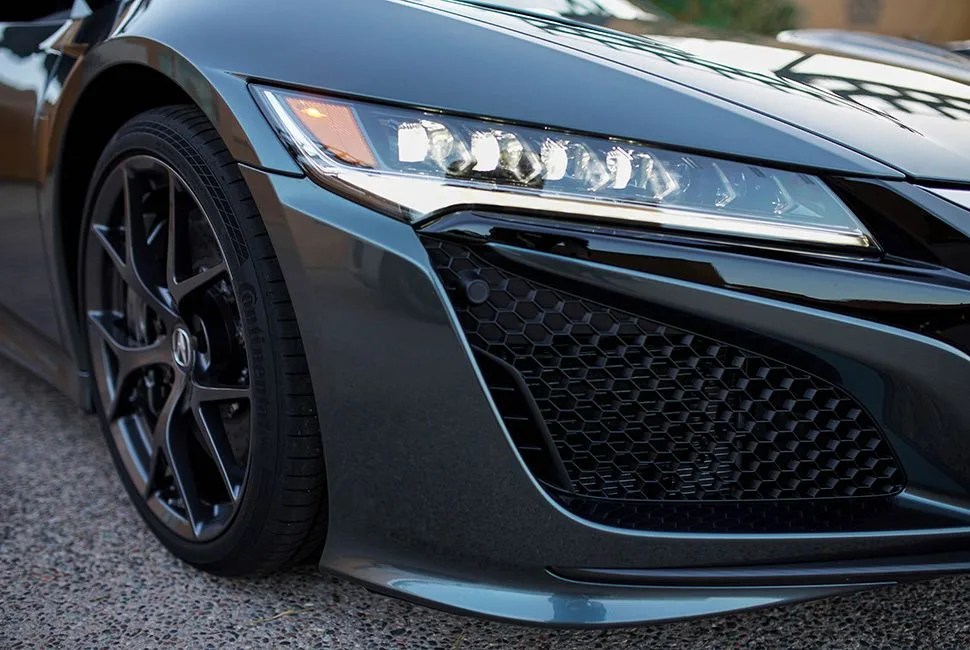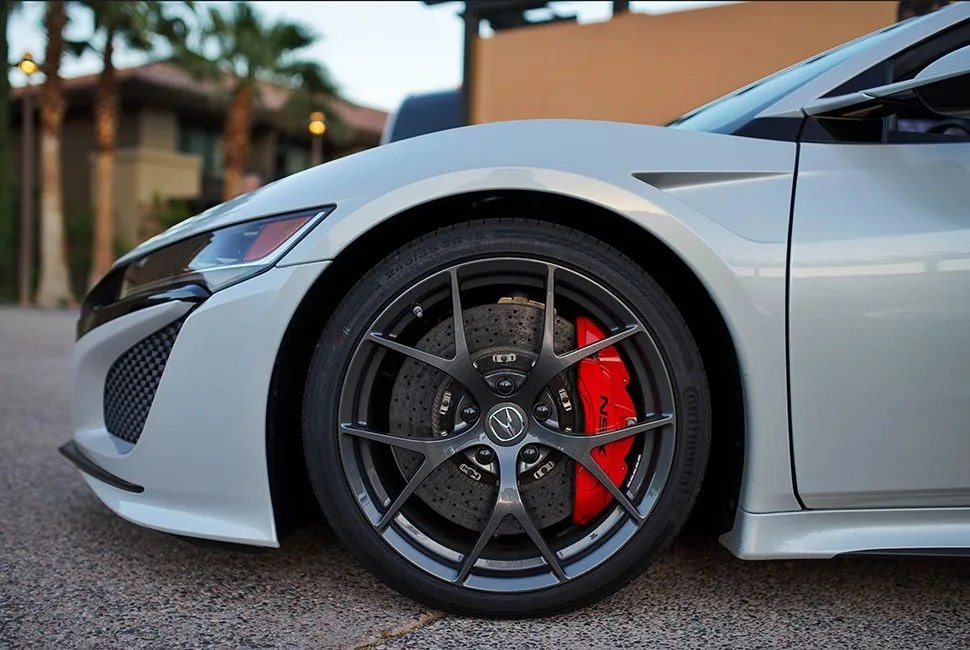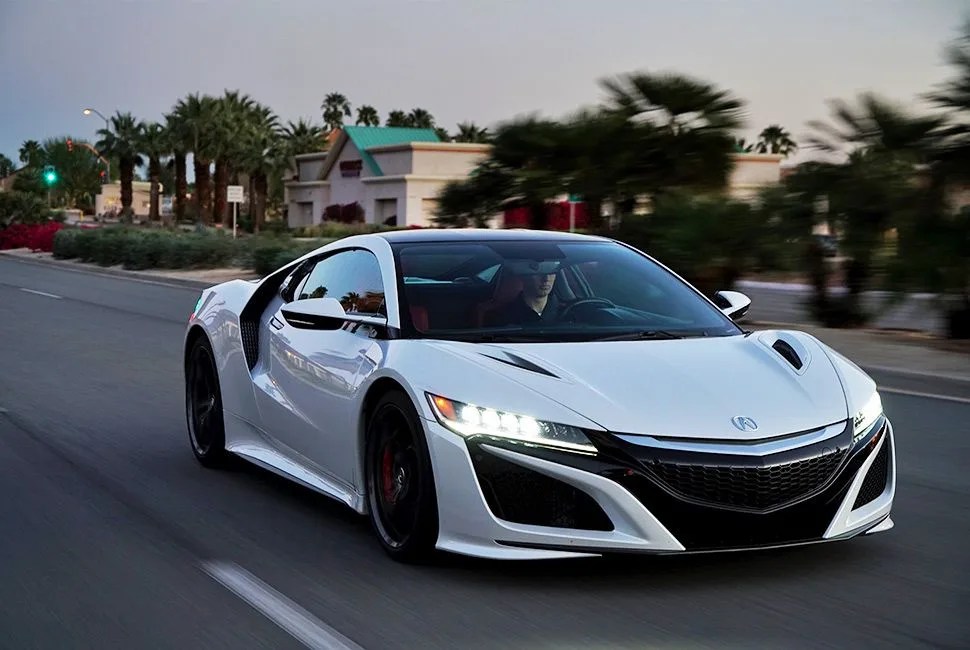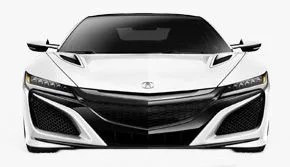12 photos
I’m ripping around the Thermal Club raceway outside Palm Springs, California, in the new 2017 Acura NSX supercar. The long-delayed machine has been slow approaching the gate, but quite fast leaving it. Its three-motor electric hybrid system — one integrated within the mid-mounted engine, and one powering each of the front wheels — gives not only a nice power boost to its twin-turbo V6, totaling 573 horsepower and 400 lb-ft of torque, but it also permits precise torque-vectoring to help navigate twisties like these tight esses at Thermal. It does this quite effectively, pivoting around turns in a way that’s almost unnaturally accommodating — and a bit unnerving. It’s like watching an owl from behind as it instantly swivels its head 180 degrees to glare straight at you.
Of course it is entirely unnatural because it’s all computers and motors modulating electric-power applications with millisecond timing in order to generate aggressive yaw movements and, ultimately, some crazy cornering. Within a few laps, you start to learn its interventions, and then push them harder and harder to boost your times. Eventually, you see that there’s barely anything you can do to truly upset this car, short of doing nothing at all as you enter a turn. It makes mediocre drivers look great, and great drivers look like Poe stalking Tie Fighters across the sky.
Others might see things differently. Acura has been slagged pretty heavily over the NSX, for two reasons. First, it’s late — or more specifically, it took a long time to reach production. This is true. Honda initially announced it would develop a successor to its wildly popular first-generation NSX (1990-2005) in 2007, but then dropped the project during the recession. It revived it in 2011, but revised the powertrain midway through development, slowing down the process. But the car is here now, commencing production in earnest next month in the new high-tech Performance Manufacturing Center in Ohio. Does it really matter that it’s “late”? Not really. Acura wanted the car to be right, and that simply took longer than expected.
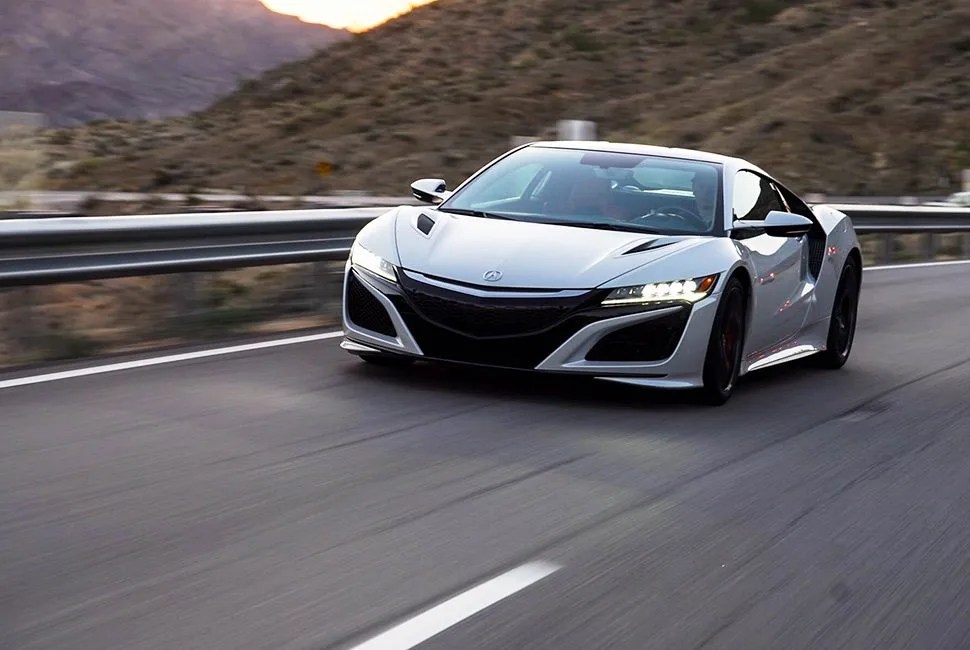
The other reason that Acura has been taking heat over the NSX is that it’s not the same car they introduced 26 years ago. Fans of the first-generation NSX loved its relative affordability: it launched at $60,000, or $108,000 in today’s money. They loved its Japanese-car quality and reliability and its supercar performance, with mid-engine balance, a low, wide stance, world-first all-aluminum construction, and a naturally aspirated, 270 horsepower V6 with variable valve-timing. Early gripes about the new 2016 model are that it lacks that sort of “people’s supercar” vibe and instead aspires to Lamborghini/Ferrari greatness as though that were a bad thing. Yes, there is presently no intermediate stepping stone allowing Honda fans to get their sports-car fix, and the NSX’s $156,000 starting point makes it a supremely challenging discretionary purchase. But, frankly, so is $108,000. Sell some stock, or buy a Porsche — but you’ll be disappointed if you do. This car sits far above any Porsche short of the 918 hypercar.
Besides, the “heritage” argument holds no real water here. Some cars have it, others don’t. The Chevrolet Corvette oozes heritage, and its enthusiasts are entitled to recoil at the mere mention of moving the engine from in front of the seats to behind them. The Porsche 911 also has it, thanks to its half-century of multi-generational tweaks to the same basic concept. But the NSX is different: it has a predecessor, not a heritage. The new NSX is less a continuation of the previous one than it is Honda’s current best-possible sports-car effort. There are similarities, including a mid-engine configuration and its Honda quality, but this car is very much its own thing. If the NSX badging bothers you, I can’t help. (For what it’s worth, the name has actually shifted meaning from “New Sports, eXperimental” to “New Sports eXperience”.)
